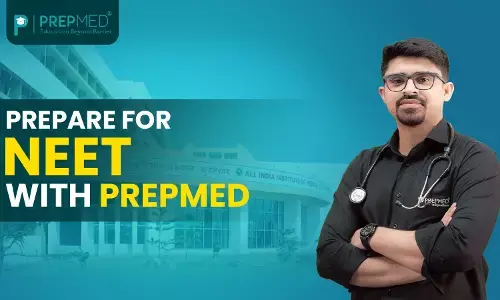Switch from traditional to modern teaching

Teaching has undergone a rapid change.
Teaching has undergone a rapid change. And we are not just talking about the increased role of technology in education. Teaching and learning itself is way more student-centric now than ever. The education system is adapting itself to the new realities and getting rid of the age-old techniques and approaches that ruled teaching and learning for centuries. This is much needed since changing skill expectations from students in the workplace needs pushing the evolution wheel in education as well. Every institution is chasing"modern teaching". But what is modern teaching actually?
Modern world of teaching: what does it entail?
Modern teaching is a culmination of several things. Updated pedagogy, use of technology, updated goals for teachers and students, improved communication, personalised learning, experiential learning, gamification, and so on.
It is not just the use of technology but a total revamp of how we approach teaching and learning. As the global realities evolve, teachers too need to examine their teaching techniques to ensure that students' personality development is in sync with what is going on outside the classroom. The focus today has shifted from acquiring compartmentalised and de-contextualised facts to integrated and usable knowledge that fosters critical thinking, risk taking and innovation.
Adopting this is indeed a massive shift for thousands of teachers who have been trained in the conventional way. Even though education stakeholders like the government, schools, and teacher training institutes are doing a tremendous job to ensure teachers are up-to-date with the new demands and the corresponding realities, the fact remains that bridging this gap seems incomplete. As a result teachers are faced with some peculiar challenges like:
Decreasing attention span
With technology influencing every aspect of students' lives, it has become a challenge for teachers to ensure that their students remain engaged and interested in learning. Students are now able to scroll through a wide range of information at a tap of a finger. Hence, they struggle to keep their minds on a topic for a longer time.
Rise of emotional complexities in students
Young students are extremely fascinated with technology. And wouldn't they be? From virtual reality to augmented reality, these children are experiencing it all. However, unchecked use of such advanced technology leaves them at the risk of developing emotional struggles, social anxiety, and other complexities.
Widening communication gap
Sound communication is the foundation of a solid relationship. Even though there is no dearth of communication tools today, there is somehow an unignorable gap between teachers, students and parents. And this is not just in terms of language but also aspirations and goals. Student aspirations are changing in response to the various opportunities that the world presents. Same goes for parents and teachers. Often, the structure of things limits their communication and understanding of each other's aspirations.
5 tips to overcome these challenges and make the transition smoother
Here are some tips that will help:
Use differentiated learning
Employing differentiated learning techniques is an excellent way to keep students engaged in their lessons. Here, teachers analyse the existing knowledge of each student and plan their lessons accordingly.
Differentiated teaching methods work great with classes where students have different levels of interests and context. Teachers can use the right examples and start from what the students already know to make the learning more engaging and enjoyable. Such a teaching method ensures that the students are attentive in the classroom right from the beginning and are able to connect to it on the basis of their existing knowledge.
Learn and understand child safety
Teachers who are trained in child safety are often quick to identify uncalled behaviour in their students. Such training also helps them to create awareness among students in a relevant manner about cyber safety and the safe use of technology.
With the increased use of technology, it becomes imperative for teachers to train themselves to help their students use technology responsibly. Such training acknowledges the deep impact that even the smallest untoward incident may cause. Hence, they help in creating a generation of reliable users who are committed to creating a safe cyber environment.
Use the right communication approach
Teachers should ensure that they are communicating effectively with their students. This also includes discussions about factors beyond the classroom. For this, teachers must be aware of the latest happenings in the outside world and act as a reliable source of information and guidance for their students. Today, even many schools have their own platforms to ensure smooth communication between students, teachers and parents.
This helps in approaching students in ways they are most comfortable and encourages them to open up about their learning struggles or any other issue that they might be facing in the classroom.
Impart ethics and value
Every teacher wants their students to develop into a responsible global citizen. No matter how much technology we use, teachers will always play a crucial role in inculcating the right values to their students. However, here too, using traditional approaches may seem futile as students may fail to connect with the core value, and lose interest altogether.
Teachers need to upskill themselves to teach ethics and morals according to the 21st century context. This includes respect for privacy, importance of consent, digital etiquettes, and so on.
Use technology right
Most classrooms across the world have started adopting the latest edtech tools. However, in many cases, they are not resulting in realising the kind of learning transformation that they were intended for.
Using technology the right way makes learning easier and accessible and builds the foundation for lifelong learning. The right technology will help facilitate self-guided learning that personnalises the content for each student according to their abilities.
Teachers here have to play an active role in choosing the right technology and gadgets to further their students' knowledge and experience. For this, they need to stay updated with the developments in edu-tech. They should also embrace technology and its positive contribution to learning and train themselves to extract maximum benefits.
Summing up
Teachers are at the forefront when it comes to making the transition from traditional teaching to modern teaching smoother. Hence, their upskilling is crucial and lies in the heart of this journey. An updated teacher who is skilled as per the demands of the 21st century education scenario will not just bridge this gap but also prepare their students to face the world that waits for them outside the classroom.
(The author is the CEO & Founder of Suraasa)















